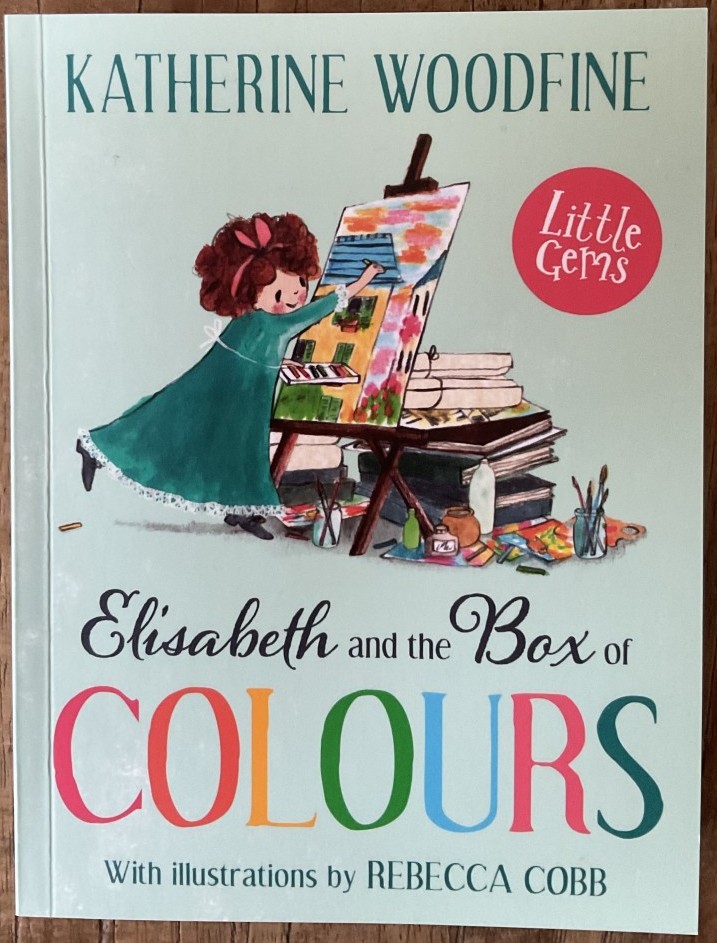Inspiring Young Readers
 posted on 07 Feb 2022
posted on 07 Feb 2022
Elisabeth and the Box of Colours by Katherine Woodfine, illustrated by Rebecca Cobb
This is the latest in the beautifully designed ‘Little Gems’ series of books published by Barrington Stoke. Each short chapter by this bestselling author is informative and the many illustrations by the award-winning illustrator contribute to the gentle atmosphere of the story. It is inspired by the childhood of French portrait artist, Élisabeth Louise Vigée Le Brun (1755- 1842). There is a fascinating afterword about her life at the end of the book which has encouraged me to find out more about her, and it hopefully will inspire younger readers to do the same.
Elisabeth is a child who is lucky enough to have a papa who is an artist and she also loves to draw and paint beautiful bright pictures with him. She lives happily with her family in a tall house in Paris, but everything changes when she is sent away to boarding school on the other side of the city. Her Papa has packed some drawing materials for her and she is excited at first, but soon realises that she will not have the same freedom to be creative. Perhaps because she has a well- developed aesthetic sensibility, she notices that everything in her new environment is grey and is told sternly that ‘Coloured crayons are against the rules’. When these are locked away in a cupboard, she begins to feel very sad:
‘The greyness seemed to surround her like a cloud. But however grey she felt, there was one thing that always made Elisabeth feel better – a tiny splash of colour’.
And this is how she survives and thrives in her very dull new home. Every day, she finds gratifying colour in glimpses of green trees, a pink cloud, a yellow butterfly, a red shiny apple and a stripy orange cat. She keeps drawing using just black ink and eventually gets into trouble because she draws all over her school books. She is also very brave because she eventually recovers her box of crayons and uses them to draw pictures for her friends as well. I do love a rebel! When she is found out by her teacher she is no longer allowed to use her drawing materials or her books to express herself, so she has to find other ways to be creative.
When her beloved father dies, she is understandably devastated and is pitched back into terrible greyness for a long time:
‘Elisabeth felt so grey it was as if she had turned invisible’.
Her school friends are very concerned and rally together to help her start to draw again. Using their gift of sundry pieces of chalk, charcoal and some ink, she draws a portrait of her Papa. When a wonderful wrapped gift of a fresh drawing book and new coloured crayons appears mysteriously in her desk, she is thrilled. Whoever could have placed it there? From this point nothing can stop her drawing pictures of things and people that they missed for her school friends. She realised that these pictures could bring great comfort to people and that, although she still felt very sad, she also liked to surround herself with images of her family.
She grows up to become a famous painter who always finds solace in her painting.
Those of us who know about what goes on in primary schools will be concerned at the lack of emphasis now given to art in the curriculum, even with the youngest children. This little story gives me some hope because it focuses on why drawing, painting and art in general can make such a difference to children of all ages, helping them to express feelings, even at the darkest times. It would be a touching story to share with children and adults that would perhaps encourage them to find time and space to be creative whenever they can, even if it’s not part of the designated curriculum.
Karen Argent
February 2022